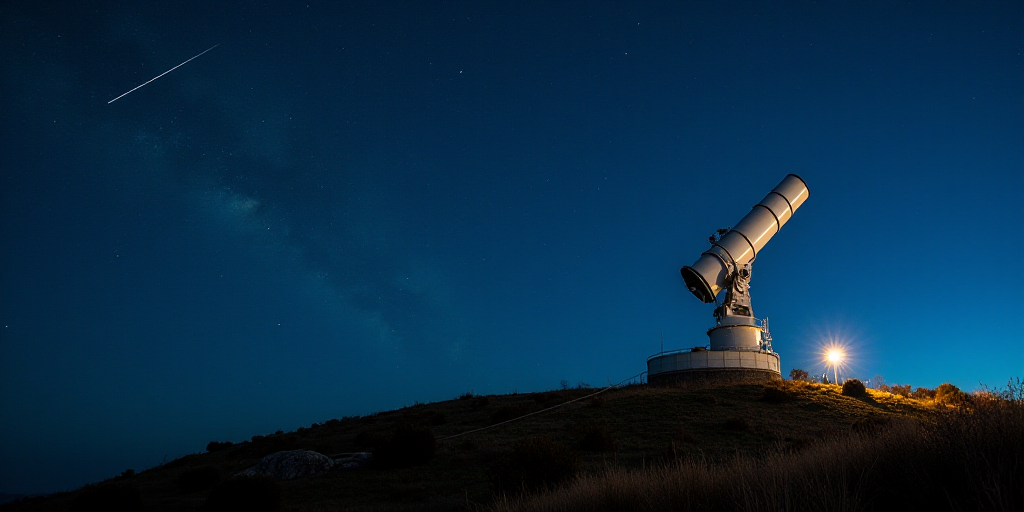Historical Moment in Asteroid Research
We are witnessing a historic moment in asteroid research. In just a few decades, we have transitioned from being oblivious to asteroids and their destructive potential to sending missions to collect samples and even deflecting them. The Fundación b612, also known as the Asteroid Institute, has recently announced the release of ADAM, a groundbreaking online software for simulating future asteroid impacts on Earth.
The Relevance of Accurate Asteroid Tracking
A recent example is the confusion surrounding the asteroid 2024 YR4. Initial orbit estimates suggested a significant risk of impact, but with more observations and precise data, the threat diminished rapidly. This underscores the importance of scientists adhering to the UN protocol for warning about risky encounters and accurately quantifying impact probabilities.
Discovering asteroids on time and precisely determining their orbits enable us to predict their movements over years, decades, or centuries. This gives us the opportunity to mitigate their effects, as demonstrated by NASA’s DART mission, which showed that a small spacecraft can deflect asteroids a few hundred meters in size.
The ADAM Probability Calculation Program
Kathleen Kiker presented a new online software, ADAM, at the 9th Planetary Defense Conference in Cape Town, South Africa. This software graphically and realistically estimates the probability of impact with known asteroids, revolutionizing the field. Previously, NASA’s Sentry program automated near-Earth asteroid encounter identification, providing a list of potentially hazardous objects for planetary defense practice.
Being able to simulate these encounters with a program like ADAM is a significant milestone, making the field more accessible and understandable to the public. ADAM allows online calculations by simply inputting the asteroid, the predicted date, and the target—Earth or Moon.
Future Encounter with Asteroid 2010 RF12
For instance, ADAM simulates the encounter between asteroid 2010 RF12 and Earth on the night of September 5-6, 2095. The program represents multiple clones spread in space to illustrate current uncertainty in orbital elements, creating a risk corridor that indicates areas where an impact might be expected. This helps predict future evacuations if necessary.
El corredor de riesgo para el encuentro del asteroide 2020 RF12 con la Tierra el 5/6 de septiembre de 2095. ADAM/b612
ADAM displays various encounter geometries for the asteroid clones, representing possible trajectories in 2095. Most clones do not impact, but 5.3% do.
En la simulación podemos ver las trayectorias seguidas por los clones y visualizar aquellos que impactan contra la Tierra. Están marcados en rojo los clones que impactarían con la Tierra.
Revolution in Vera Rubin and Flyeye Observatories
To avoid or mitigate asteroid impacts, we must first discover them. We are on the verge of a revolution in studying small solar system bodies. So far, we have identified over 1.5 million asteroids through digital photography and sky registration in 225 years.
The Vera Rubin Observatory’s massive digital camera in Chile will soon reveal the first results from the Legacy Survey of Space and Time (LSST). This observation program, scanning the entire southern sky every three days, is expected to double the number of known asteroids and other distant objects in less than a year.
Imagen de larga exposición del firmamento sobre el nuevo Telescopio Vera Rubin. Las estrellas aparecen formando arcos debido a la rotación de la Tierra durante varias horas de exposición.
Meanwhile, the European Space Agency (ESA) is promoting automated telescopes called Flyeye, inspired by insect eyes, to scan the sky nightly. The goal is to create a global network of telescopes capable of detecting all asteroids larger than 40 meters several weeks before their Earth encounter.
Presentación del primer telescopio Flyeye en Matera, Italia.
The Challenge: Monitoring Thousands of New Near-Earth Asteroids
The Vera Rubin Observatory’s new monitoring program will lead to a surge in new discoveries, requiring preparation for the influx. We expect to detect over a hundred new near-Earth objects each night. For context, the CNEOs project at NASA’s Jet Propulsion Laboratory has cataloged approximately 38,500 of these bodies.
The new discoveries of thousands of asteroids, trans-Neptunian objects, and comets will necessitate a strong commitment to scientific research. We face significant challenges in understanding and processing the vast amounts of information that will be generated, even daily.
It seems paradoxical that the US government considers cutting missions crucial to our understanding of potentially hazardous asteroids, like the recycled OSIRIS-Apex mission already in space. In this uncertain landscape, progress in exploring smaller bodies might be led by other countries, notably China, Japan, and the European Union.






